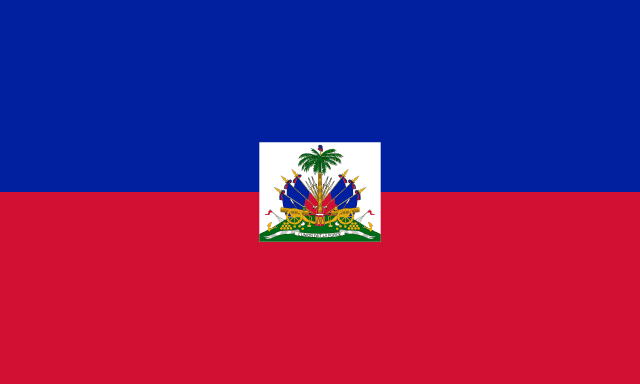Country Information
| Sovereign State | Yes |
| Country Codes | HT, HTI, 332 |
| Official Name | Republic of Haiti |
| Continent | North America |
| Capital | Port-au-Prince |
| Government Type | Semi-presidential republic |
| Currency | Haitian Gourde (HTG) |
| Calling Code | +509 |
| Member Of | United Nations, Organization of American States, CARICOM |
| Population | Approximately 11.4 million (as of 2023) |
| Total Area | 27,750 square kilometers |
| Highest Point | Pic la Selle (2,680 meters or 8,793 feet) |
| Lowest Point | Caribbean Sea (0 meters or 0 feet) |
| GDP Per Capita | Around $1,800 USD |
| Life Expectancy | Approximately 64 years |
| Internet TLD | .ht |
Haitian National Anthem
La Dessalinienne
For the country, for the ancestors
Let us march, let us march united
For the country, for the ancestors
Let us march, let us march united
In the fields, in the cities
Let us produce a lot, let us produce a lot
This is the only way to be free, to be free
Let us march, let us march united
For the country, for the ancestors
Let us march, let us march united
Flags of Neighboring Countries

History of the Haitian Flag
The flag of Haiti is deeply interwoven with the nation’s history and symbolizes its struggle for independence. The current flag was adopted on February 25, 1986, but its origins trace back to the early 19th century during the Haitian Revolution against French colonial rule.
Haiti’s flag was created on May 18, 1803, by removing the white band from the French Tricolore, signifying the removal of the white colonizers and a commitment to the unity between African and Mulatto Haitians. This act of alteration was led by Jean-Jacques Dessalines, a leader of the Haitian Revolution. The two remaining bands, blue and red, were rearranged horizontally to symbolize the union of the black and mulatto populations.
Over the years, Haiti’s flag underwent several changes, especially during periods of political turmoil. The flag’s design was often modified to reflect changes in government or political ideology. However, the core symbol of black and mulatto unity remained constant.
The flag’s current design features two horizontal bands, blue over red, with a white panel bearing the national coat of arms in the center. The coat of arms depicts a trophy of weapons ready to defend freedom and a royal palm for independence. The motto “L’Union Fait La Force” (Unity Makes Strength) is inscribed on the coat of arms, emphasizing the importance of unity and solidarity in the fight for freedom.
The Haitian flag is not just a national symbol but also a testament to the country’s turbulent history and enduring spirit. It reflects the pride of a nation that was the first to gain independence from colonial rule in Latin America and the Caribbean and became the world’s first black-led republic. The flag’s evolution mirrors Haiti’s ongoing quest for identity, sovereignty, and unity amidst its complex historical context.

